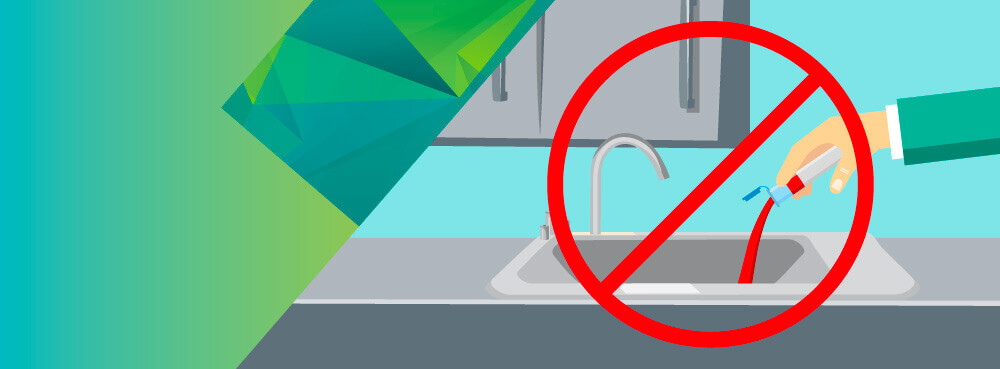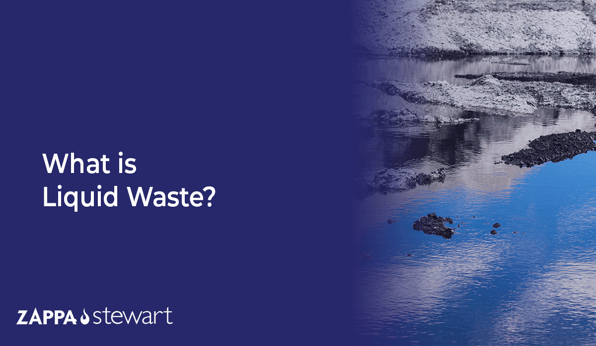Leading Industrial Wastewater Treatment Solutions: Guaranteeing Compliance and Efficiency
Leading Industrial Wastewater Treatment Solutions: Guaranteeing Compliance and Efficiency
Blog Article
How Fluid Garbage Disposal Works: A Detailed Review of Strategies and Technologies Utilized

Introduction of Liquid Waste Kind
The intricacy of liquid waste kinds demands an extensive understanding of their characteristics and ramifications for disposal. Fluid waste can broadly be classified right into several types, including commercial, metropolitan, farming, and contaminated materials. Each category exhibits unique buildings, requiring details administration strategies to mitigate ecological and health dangers.
Industrial fluid waste stems from manufacturing processes and often includes an array of contaminants, such as hefty steels, solvents, and organic substances. Municipal liquid waste, mostly comprising wastewater from houses and business establishments, contains natural issue, nutrients, and microorganisms (industrial wastewater treatment). Agricultural fluid waste, including runoff from farms, may have plant foods, pesticides, and pet waste, positioning dangers to water top quality and environments
Dangerous liquid waste is characterized by its poisoning, sensitivity, or potential to trigger damage. This category consists of substances like acids, bases, and specific chemicals that require rigorous handling and disposal methods. Understanding these varied liquid waste types is essential for creating reliable disposal approaches and ensuring compliance with ecological policies. Correct category and characterization are essential for applying suitable therapy methods and lessening the adverse influences on public health and wellness and the atmosphere.
Physical Treatment Approaches

Screening is the preliminary step, where larger fragments and particles are gotten rid of from the fluid waste making use of displays or grates. This procedure shields downstream devices from damage and makes sure smoother procedure. Adhering to screening, sedimentation makes use of gravitational force to separate solids from fluids. In sedimentation tanks, much heavier bits resolve at the bottom, creating a sludge layer, while the clarified liquid can be further dealt with.
Filtering is one more important method that includes passing the fluid through permeable materials, such as sand or membranes, to catch smaller sized bits. This action boosts the quality of the fluid, making it appropriate for succeeding treatment processes.

Chemical Treatment Methods
Chemical therapy techniques are necessary for properly managing liquid waste, especially in attending to liquified and colloidal impurities that physical approaches may not properly eliminate. These methods use numerous chemical agents to neutralize, speed up, or transform hazardous compounds right into much less hazardous kinds.
One typical technique is coagulation and flocculation, where chemicals such as alum or ferric chloride are included in advertise the gathering of suspended bits. This procedure improves sedimentation, permitting for easier removal of the resulting sludge. In addition, oxidation processes, employing agents like chlorine or ozone, are used to damage down complex organic substances and virus, making that site the waste safer for discharge or additional therapy.
Neutralization is an additional critical method, which changes the pH of acidic or alkaline waste streams to neutral levels, protecting against potential harm to downstream systems and the environment. Additionally, progressed oxidation procedures (AOPs) use mixes of oxidants and ultraviolet light to weaken persistent pollutants, achieving a higher degree of therapy efficiency.
Biological Therapy Procedures
Organic therapy procedures play an important function in the administration of liquid waste by using bacteria to break down organic matter and decrease pollutant levels. These processes can be broadly categorized into cardiovascular and anaerobic treatments, each employing details microbial neighborhoods to accomplish efficient waste deterioration.
Aerobic treatment entails using oxygen to assist in the break down of organic products by microorganisms. This procedure is frequently carried out in triggered sludge systems, where aeration tanks give a helpful atmosphere for microbial growth, bring about the oxidation of natural contaminants. The resultant biomass can be separated from dealt with effluent with sedimentation.
In contrast, anaerobic therapy happens in the absence of oxygen, depending on different bacteria to damage down organic matter. This technique is particularly advantageous for high-strength waste, as it creates biogas, a sustainable energy resource, while reducing sludge manufacturing. Technologies such as anaerobic digesters are often employed in local and industrial applications.
Both site link cardio and anaerobic organic treatments not just lessen the environmental impact of fluid waste but additionally help with source healing, making them vital components of sustainable waste management methods. Their versatility, performance, and effectiveness sustain their widespread application across different sectors.
Arising Technologies in Disposal
Innovative approaches to liquid garbage disposal are quickly evolving, driven by innovations in innovation and a raising emphasis on sustainability. Among these arising technologies, membrane layer bioreactors (MBRs) have actually acquired grip for their capacity to combine organic therapy with membrane filtering, causing top quality effluent that can be recycled in numerous applications. MBRs make it possible for smaller footprints and extra reliable operations compared to conventional systems.
An additional promising growth is making use of anaerobic digestion combined with nutrient healing innovations, which not just deals with liquid waste however additionally produces biogas and recovers beneficial nutrients like nitrogen and phosphorus. This twin advantage improves source efficiency and decreases ecological effect.
Furthermore, advanced oxidation processes (AOPs) are being adopted for the degradation of complex organic pollutants. These approaches make use of effective oxidants and drivers to break down impurities at the molecular level, providing a very efficient solution for tough waste streams.
Moreover, the assimilation of expert system and artificial intelligence in waste monitoring systems is enhancing operational performance and anticipating maintenance, leading to lowered costs and boosted ecological compliance. These modern technologies show a considerable change towards more lasting and effective fluid garbage disposal techniques.
Verdict
In final thought, reliable fluid waste disposal requires a comprehensive understanding of numerous methods and technologies. The integration of physical, chemical, and organic treatment techniques guarantees the reliable management of varied waste types. Moreover, the development of innovative innovations enhances treatment efficiency and promotes sustainability in waste administration techniques. By constantly progressing these approaches, it comes to be feasible to address the growing difficulties connected with liquid waste, inevitably adding to ecological protection and read review resource recovery.
Liquid waste disposal is a crucial element of ecological monitoring, calling for a comprehensive understanding of various techniques and modern technologies tailored to various waste kinds. Fluid waste can broadly be categorized right into several types, consisting of industrial, community, farming, and hazardous waste. Agricultural liquid waste, consisting of runoff from ranches, may consist of plant foods, pesticides, and animal waste, positioning dangers to water quality and communities.
Numerous physical treatment methods play a vital function in managing liquid waste successfully - industrial wastewater treatment.In final thought, efficient liquid waste disposal necessitates a comprehensive understanding of numerous techniques and technologies
Report this page